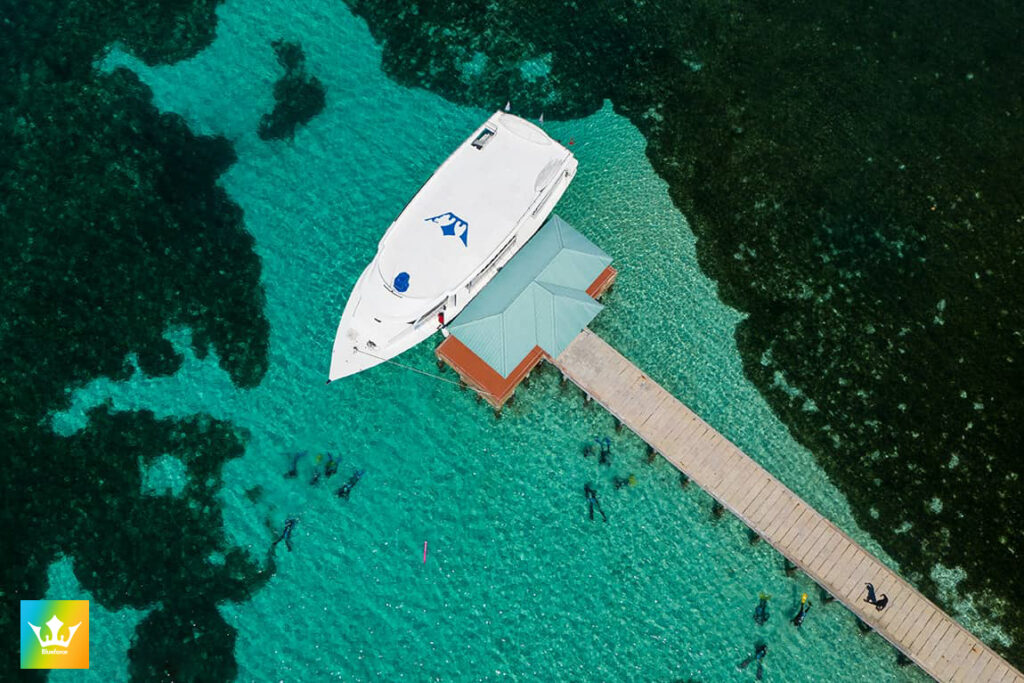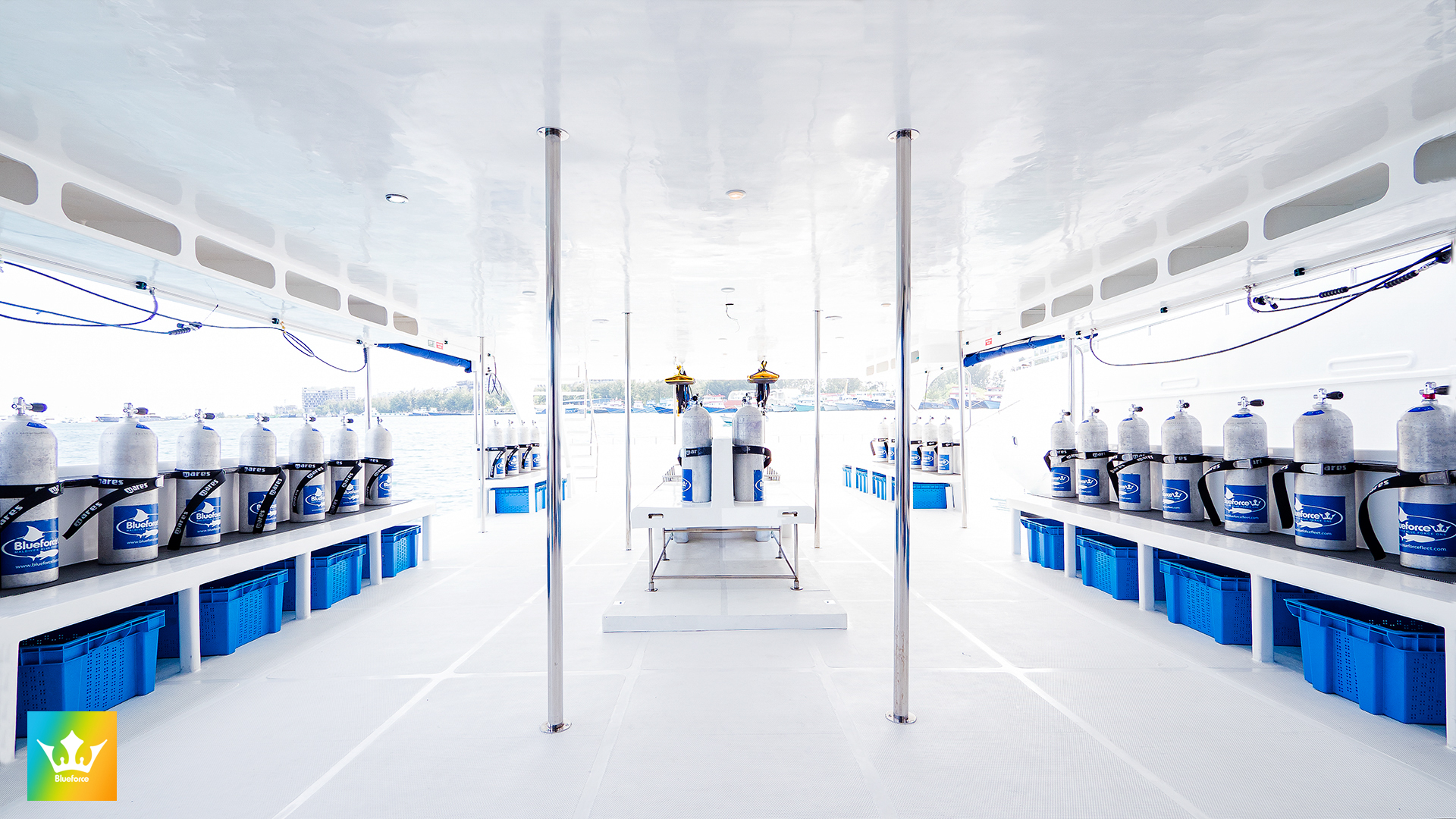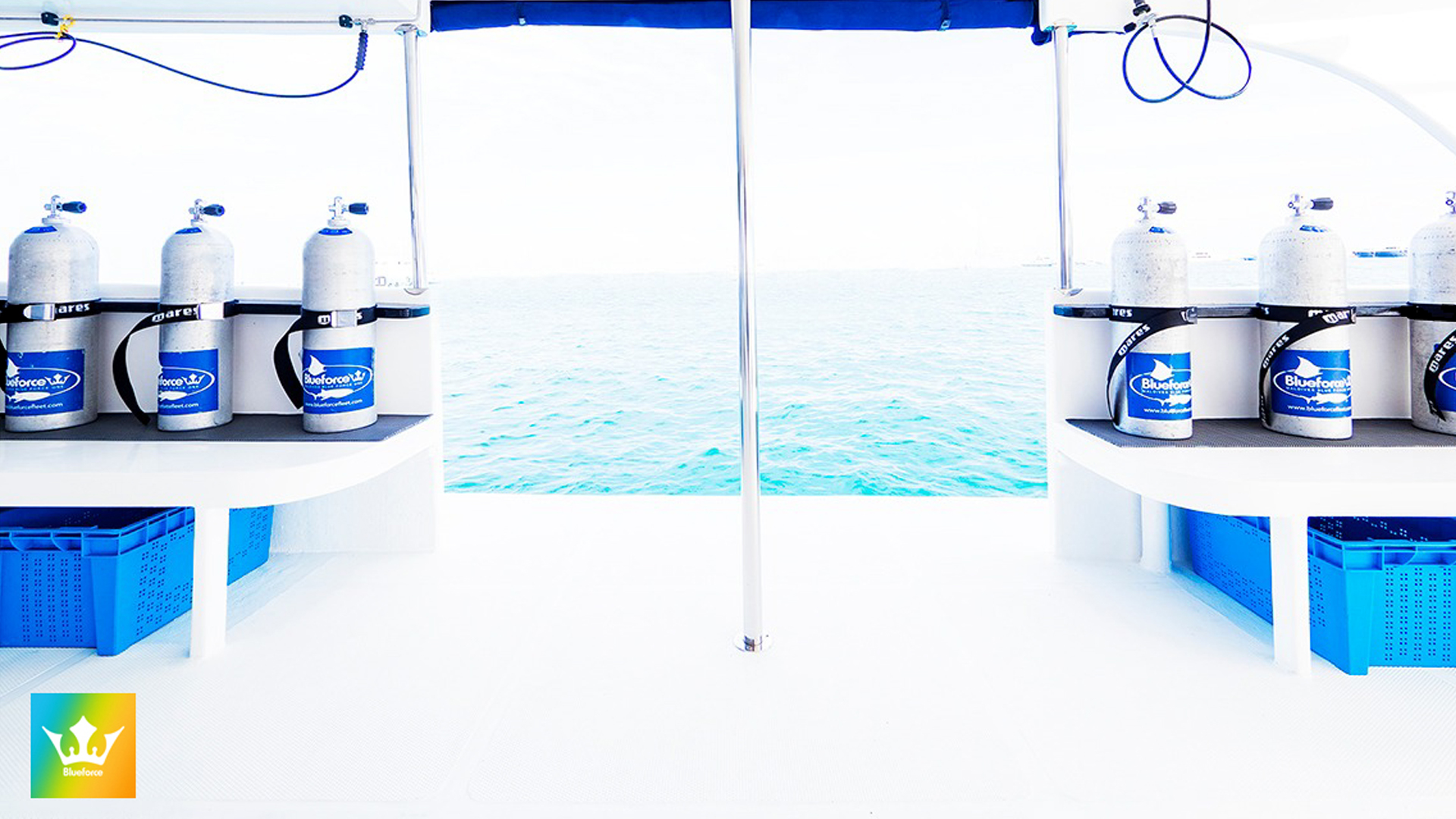The dhoni
The perfect diving boat
There are many reasons why we can say that the Maldives is probably the best place in the world to dive.
The climatic conditions, the underwater orography, and its wonderful landscapes are just some of the elements of an endless list that make them a perfect place as a destination for our diving vacations.
One of the unique elements of these wonderful islands that make diving there an unforgettable experience are the dhonis.
What is a dhoni?
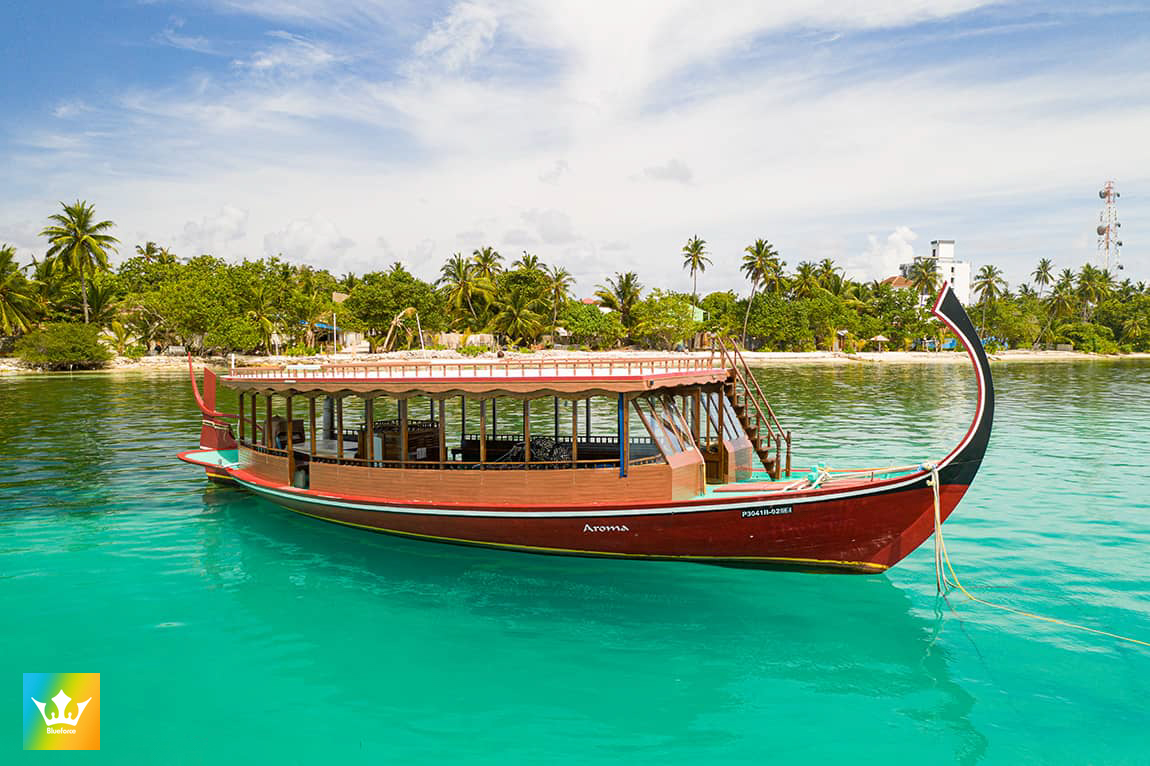
The dhoni is the traditional and most widespread boat in the Maldives. Originally it was a sailing boat. Always handmade and made of coconut wood, its origin is attributed to the Arab influence in that area and it maintains a great resemblance to the dhow boats.
It is a very versatile boat that, depending on its size, can be used to transport people, and equipment, for fishing, and even as a diving boat.
A large number of utilities
The Maldives has an extensive fishing fleet of dhonis, each of which can carry between eight and twelve people. These are currently variants of the traditional dhoni because nowadays these boats are usually equipped with engines. They are mainly built in Alifushi, Raa Atoll. Dhoni boat building is a traditional Maldivian craft and young apprentices are instructed by expert craftsmen, who spend about 60 days to complete the making of each handcrafted boat. Modern dhonis are built by combining fiberglass and wood.
How is a dhoni built?
Although the tools used in the construction of dhonis have changed, little has changed in their basic design. As in the past, the boats are still built without a documented plan. The design and symmetry of the boat emerge as it is built.
Imported hardwoods are used instead of coconut wood, which was used in the past to make the hull. Copper rivets are used to hold the planks together instead of coconut, which was used for this purpose even half a century ago. The square sail made of coconut leaves gave way to a triangular latin sail. Although it is still considered essential and carried on board, it is only used in case of emergency or to relieve strain on the engines. Almost all dhonis are diesel-powered.
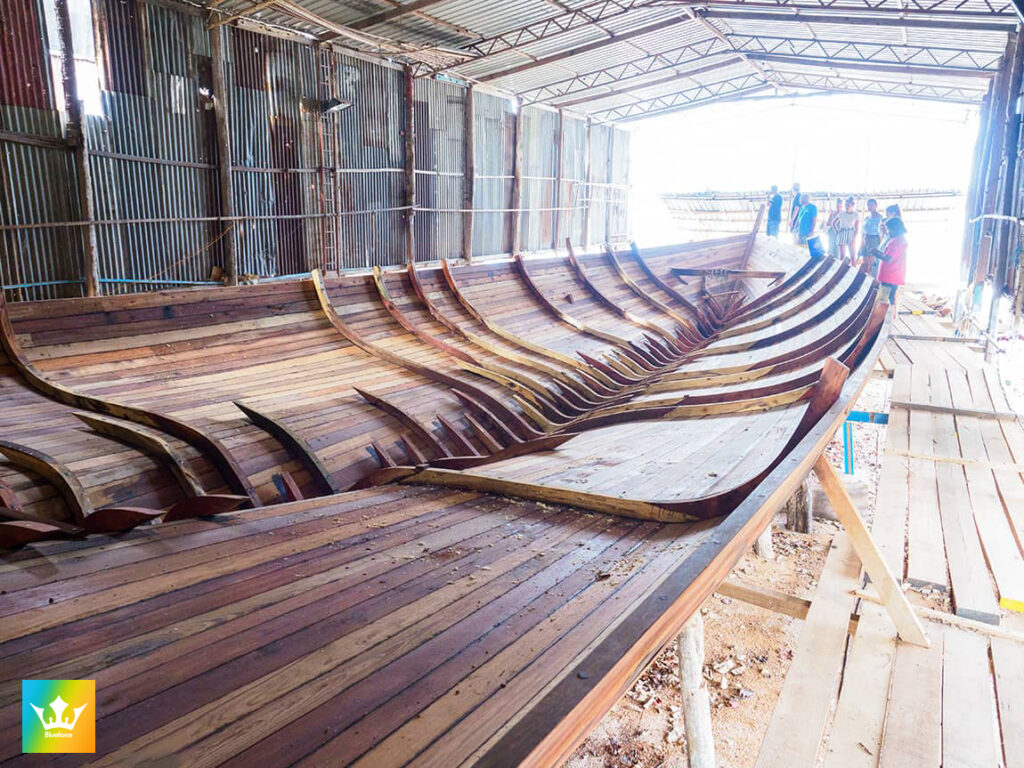
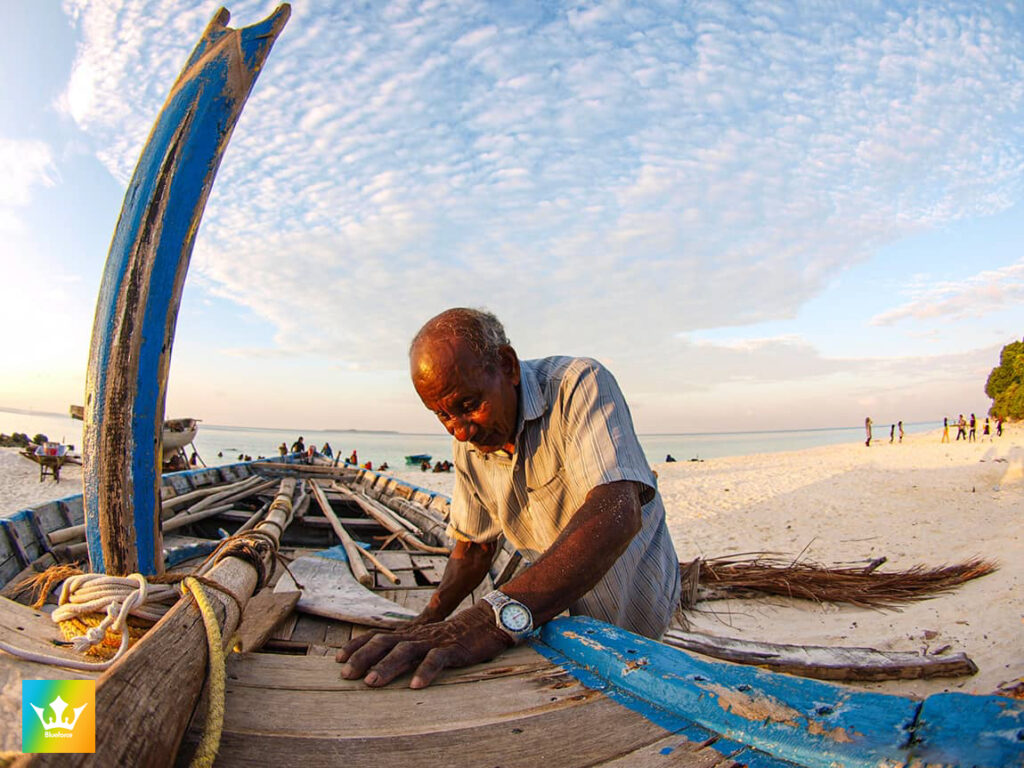
A traditional dhoni can be up to 3 m in size and is mostly used to travel short distances or traverse the shallow waters of the lagoon. Islanders often use these ferries to cross to nearby islands in search of firewood. The average fishing dhoni used to be about 10 meters (33 feet) long, but new-generation fishing boats can be twice as large or even larger. The basic design of dhonis has proven its seaworthiness as it has been tested and tweaked for centuries. Even the luxury cruisers being built in the country use the same basic hull design and can reach 30 meters (100 feet) or more.
A piece of Maldivian history
The name “dhoni” has two distinct origins. The word “doni” comes from the South Indian languages of Telugu, Tamil, Konkani, and Kannada, while another etymological vein points to the Persian word for “yacht”.
Even the Malay word “tuoni” bears some similarity to “dhoni”, but means “small boat”. Some Southern Dravidian languages are also thought to use the word “tull” to mean “dig”.
Much like a dhow, the traditional boat of the Arabs, the dhoni has been an integral part of the Maldives. It is known to be the oldest sailing vessel the island nation has ever seen. It is said that the first dhonis were dug out of a log of wood, earning them that apt name.
Many centuries ago, dhonis were used exclusively by Maldivian fishermen. Interestingly, some of these boats were built with coconut wood, the local raw material. Much later, in the 19th century AD, as a consequence of the Industrial Revolution, the fishing community of the Maldivian archipelago switched to mechanized versions of the dhonis.
The real, visible change came much later in the Maldives, in the 1980s when the country earmarked a $3.2 million loan to mechanize the simpler dhonis. This coveted loan came from the International Development Association (IDA).
This modernization, however, increased the operating costs of each dhoni, as they now had to account for fuel costs as well. Nevertheless, the gamble paid off for the local fishermen, who almost doubled their catch capacity in just three years.
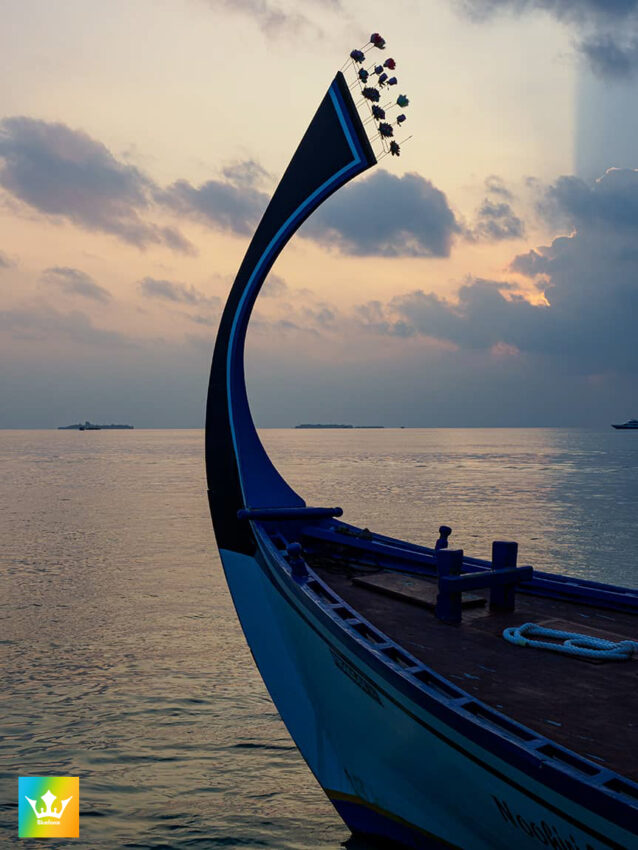
The perfect auxiliary dive boat.
Planning a “liveaboard” dive trip in the Maldives has countless advantages.
The main boat is a hotel, with a great variety of services and amenities on board, with various activities to enjoy during the week in between dives, and also allows you to be in direct contact with all the wonders of this destination.
But the main advantage of the “live aboard” boats is that they are floating hotels, which move from one atoll to another and allow us to visit the best dive sites in each of them. It is a floating hotel accompanied by a floating dive center, our beloved dhoni.
Unlike other “liveaboard” diving destinations, the Maldives offers us the great advantage of being able to carry everything related to our beloved activity on an auxiliary boat, the dhoni.
As if it were a diving center, all the diving equipment, wet suits, light equipment, tanks, and everything else stays on the dhoni after the dive.
A mobile dive center that brings us closer to the best dive sites while we equip ourselves with the help of the crew and guides. A great place to rest, chat with the other divers or just sunbathe on the upper deck.
How is a diving dhoni equipped?
At Blue Force Fleet we are very demanding with the comfort on board and the quality of our service. For us the experience of our guests is paramount and for that, it is necessary to invest in resources.
That is why we are proud to own the 2 best dive dhonis operating in the Maldives, the Maldives Blue Force Dive 1 and 2, the first launched in late 2020 and the second in early 2023.
Designed by divers for divers, designed down to the smallest detail to be comfortable and safe.
We have lowered the level of the deck so that the jump into the water is from a lower height, and doubled the width of the jump platform to make it the most spacious.
All mechanical elements for loading bottles such as compressors and membranes are located below the deck so that users have no physical contact with any mechanical device.
With a 23 m length x 7 m beam, they are the widest dive dhonis in the country.
Equipped each one of them with 3 compressors and 2 NITROX membrane systems, we guarantee total availability in case of any failure and minimum loading times.
If to this we add toilets with hot water showers, special tables, and sweetening tanks for the cameras or extra wide diving benches, we turn the dhoni into the best place to be during the trips to the dive site.
Each dhoni has its own captain and crew to assist the divers and perform all the necessary tasks on board and has its own cabins at the bow of the boat.
